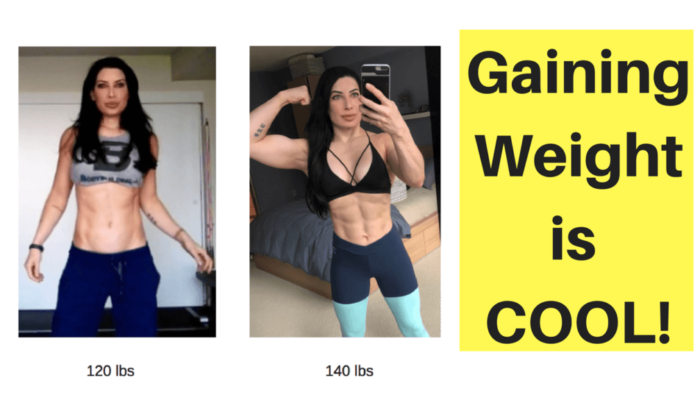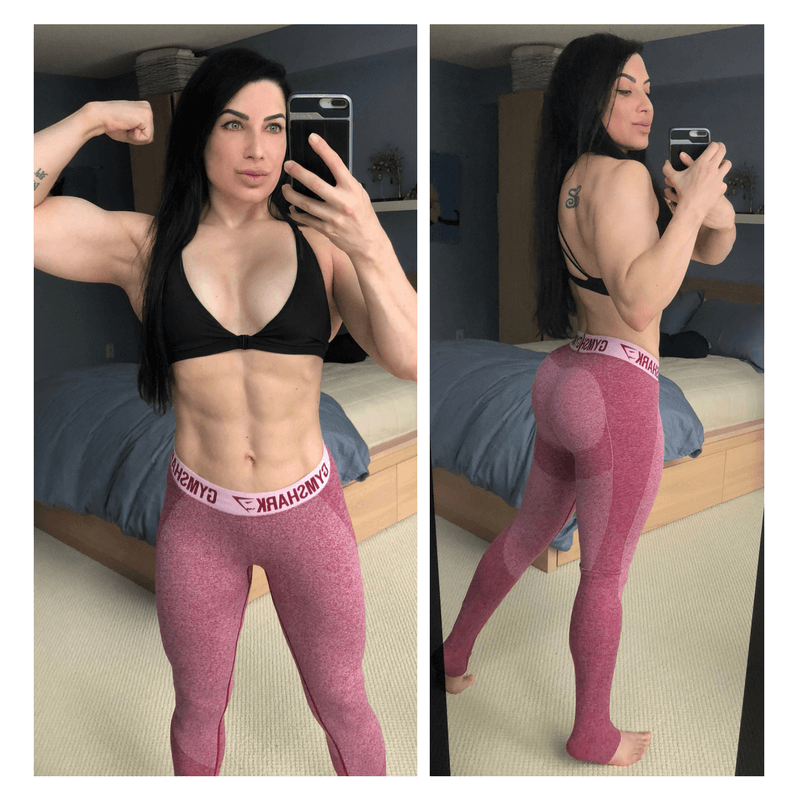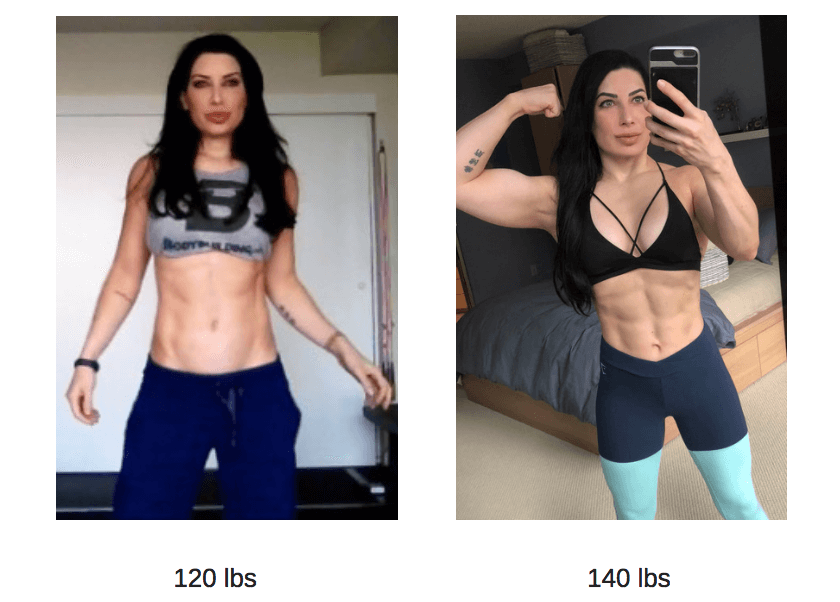
The Story of a Retired Fitness Model...
Once upon a time, I was a PRO fitness model, and during this time I subscribed to the “diet and exercise” approach … until it started working against me. Nothing about it was sustainable: I felt like a hungry hamster running in a wheel. I knew if I overconsumed carbs or calories or if I missed a calorie-burning exercise session, I’d gain weight. It quickly became a vicious numbers game of calories in and calories out. I was trapped in “diet and exercise jail”.
I learned 5 things from this experience:
- Unless you can follow the diet for the rest of your life, the diet will fail you.
- Don’t diet if you are maintaining a healthy weight.
- Too much emphasis is placed on the number on the bathroom scale instead of body composition.
- Too much emphasis is placed on the amount of calories being burned in a workout instead of building calorie-burning muscle mass.
- The way you are training will significantly impact your outcome.
Everyone always says “You can’t out-train your diet”. But the reverse, which is often overlooked, is also true: “you can’t out-diet your training regimen”.
Just the other day I asked a few women what they do when they want to improve their physiques, and they all responded, “eat less calories, cut carbs and do more cardio”.
The problem with dieting and doing more cardio is that you inevitably lose muscle mass. You don’t want to lose muscle because muscle burns calories, even when you are sleeping and even if you miss a workout. The more muscle mass you have, the more calories you can get away with eating without gaining fat because your basal metabolic rate will be higher.
If I knew then what I know now, I never would have slashed my calories or exercised to burn calories. Why not? Because I was successfully maintaining my weight (which was a healthy weight) my entire life before I went on my first diet. If I had wanted to improve my body composition, then I never should have DIETED and EXERCISED, but rather, I should have focused on building muscle and getting stronger and fitter, improving my nutritional choices and improving my metabolic flexibility.
If I could go back in time, there are 2 things I would have done differently:
- Fueling and Training: This is sustainable because calories and carbs are not restricted and training for performance is incredibly motivating. Training for performance will make you mentally and physically stronger, which in turn boosts confidence. Training consists of compound exercises, such as deadlifts, and pull-ups. These exercises elicit a potent neuroendocrine response in the body. Exercises that induce a neuroendocrine response will increase muscle mass and bone density.
- Intermittent Fasting: (i.e. skipping breakfast) would have helped me improve my metabolic flexibility. Metabolic flexibility refers to the ability to switch from using carbs or fat as fuel. I want to be metabolically flexible. I don’t want to polarize how my body uses carbs or fats. That’s why I don’t demonize any macros and I fast for 16 to 18 hours a day. So if you want to burn fat, then teach your body how to burn fat by fasting. Here's my approach to intermittent fasting.
I think it’s unwise to demonize a macronutrient.... that is EXTREME! If it’s extreme, then it’s not sustainable. So good luck following a low protein, negligible carb diet for the rest of your life. Strict diets SUCK! And tying your happiness to an aesthetic outcome that requires a lot of strict dieting to achieve is DANGEROUS (I speak from experience).
So I made a change. I quit exercising to burn calories and I started training to become a badass. Training enabled me to quit dieting. Today, I’m an athlete and my performance relies heavily on calorie adequacy and carbs. Carbs fuel my workouts and provide an anabolic environment. Thanks to calorie adequacy and the right training stimulus, I’ve been able to build muscle. Although my weight has gone up on the bathroom scale, my body fat percentage has not. I’m more chiseled today than I was when I was cutting carbs, slashing calories and doing high calorie-burning workouts. And the best part is that I’m not walking around starving or obsessing over food.
I’m not genetically gifted (I'm an endomorph), I’m no spring chicken (I was born in the 1970's), and I do not have an athletic background. Despite all the strikes against me, I’m succeeding because my approach is simple and sustainable.

Gaining Weight is Cool
I used to only care about my appearance, and that is what motivated me to “diet and exercise”. My goal was to weigh 120 pounds (I’m 5’6”). Because my regimen was so strict, I could never maintain my results. My weight was constantly going up and down.
Nowadays, my WHY is completely different. I have very specific goals that motivate me to consistently train and fuel with purpose. It has been incredibly satisfying to fix muscle imbalances, improve mobility, break performance records (PRs) and learn new skills like pull-ups, handstands and Olympic Weightlifting. It keeps me coming back for more. Ironically, it wasn’t until I shifted my focus towards performance and away from aesthetics that I was actually able to significantly change my physique. I’m 140 pounds, and I’m proud of that. I’ve never looked or felt better.
Getting fitter and stronger are incredible confidence boosters. If I could give advice to my younger self, I would say, “Sara, don’t fixate on what your body looks like. Focus on what your body can do.”

WHY you Train Matters
I just want to clarify that I’m not anti-cardio. Cardio is a big part of my training regimen. Remember, when it comes to training, it’s the WHY that matters.
I used to do double unders to burn as many calories as possible so that I could weigh as little as possible. I even wore a heart rate monitor to track the calories burned. Now my heart rate monitor is stashed away in a drawer and I’m trying to beat my record for maximum unbroken double unders. I’m at 198. How many can you do unbroken?
A major reason why I do StrongFit training is to improve my imbalances so that I can move well. Being balanced and pain-free is a very important WHY for me. I think this style of training is a great option for beginners because it’s simple to learn: anyone can pull a rope or carry a sandbag. Click here for my sandbag carry tutorial.
I’m a huge fan of bodybuilding (especially lat pull-downs and bench press) because it helps me overcome muscle weaknesses and improve my athletic performance.
I like to do CrossFit because it has significantly improved my self-confidence, it keeps me stimulated and it is fun.
Follow me on Instagram @DrSaraSolomon. I post my daily workouts there!
HOW You Train Matters
Moving with correct technique (i.e. ensuring you are recruiting the correct muscles), will make the correct muscles strong. This will keep you free of injuries and it will turn you into a beast. If you are moving with incorrect technique, then you are asking the wrong muscles to compensate. This makes the correct muscles weaker, it prevents you from making progress with your training, it leads to muscle imbalances and it puts you at risk for injury.
For example, let’s take a look at the conventional deadlift. Just because you look like you are deadlifting correctly does not mean you are actually deadlifting correctly. The goal of the deadlift is to hinge at the hips without any flexion or extension of the spine. Oftentimes you see people overarching their spine and using their erectors to deadlift the bar instead of their inner hamstrings and external obliques. If you have low back pain when you are deadlifting, it’s because you are squatting your deadlift.
By the way, I think deadlifting, when executed correctly, is game changing. Even my 70-year-old mother deadlifts.
Here are a few of my training tips:
- Know your WHY.
- Understand WHY and HOW you are doing certain exercises.
- Include heavy compound (multi-joint) resistance training in your regimen.
- Don’t put the cart before the horse. Trying to add strength to a faulty foundation is like trying to build a house on sand. Learn proper movement mechanics. Establish your weaknesses, imbalances and deficiencies, and rectify those before attempting lifts and skills beyond your ability. The goal is to train function, not dysfunction.
- Functional bodybuilding movements are very important for improving athletic performance.
- Prioritize mobility. Mobility is how far you can move a joint with muscular control. Mobility is related to strength. The more mobile you are, the stronger you will be. Passive stretching won’t help you improve your mobility.
- Make sure your training program targets all planes of movement.
- Train both your aerobic and anaerobic energy systems.
- Slow gains for the win. I like to use a big whiteboard to document all of my PRs. It helps me keep my training progressive.
- Sometimes it’s not a matter of more, but simply better.
- Ditch your diet and start fuelling your training.
- Training is an odyssey that requires tremendous self-awareness and a desire to stay the course for a very long time.
- Consistency is a synonym for motivation. If you rely on instant results to motivate you, you will end up throwing in the towel within a week.
Train And Fuel For Performance, Not The Scale
Make sure you enjoy the process. If you don’t enjoy the process, you won’t be able to keep it up.
And remember, you can’t out-diet a deficient training regimen. So quit exercising to burn calories and start training to become a badass—you'll never have to obsess over food or starve yourself again!
Where to Start?
Are you eating enough calories? Are you demonizing carbs?
I used to make it SO difficult for myself to be consistent. I would slash my calories (1200/day) and carbs (<30g/day), I'd demonize bread and chocolate, and I'd spend 60 minutes/day doing cardio. But I didn't have the willpower to adhere to this strict regimen. I'd end up bingeing. My body composition wasn't improving. ☹️
The reason why I was able to favourably change my body composition was because I ditched the strict rules. I let myself enjoy bread and chocolate, I let myself eat 2000 calories a day, and I stopped the excessive cardio and started training to get stronger, fitter and more balanced. I love this! I love everything about my daily process. That's why it's so easy for me to be consistent. That's why I transformed my body ... it was a byproduct of loving the daily process.
If you don't love your current daily process, then what could you start doing differently today that would make you say "HELLS YES" instead of "HELLS NO"?
✅ If you've run your metabolism into the ground from years of dieting then I'd love to help you. I devoted 4 years of my life to creating my Fat Loss Fast System. It's a sustainable approach to eating. You will learn how to implement intermittent fasting, flexible dieting and reverse dieting. You can click here for my Fat Loss Fast e-Book.
✅ If you want to train like I do (to fix muscle imbalances, to get stronger and fitter), then join my online Strength Academy. It's a home program, so you can train in the comfort of your own home gym. And be sure to follow me on instagram @drsarasolomon for my daily workouts!
So ladies, let's think differently about calories and muscle! 😄
xoxo
Sara

